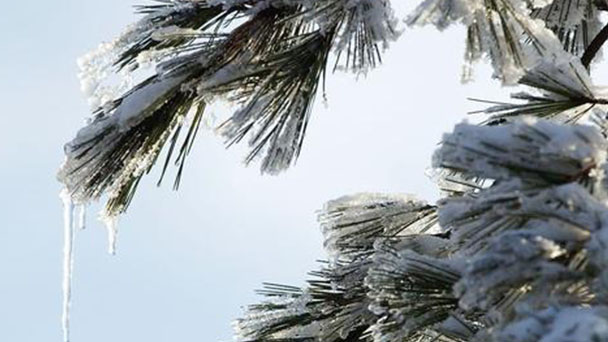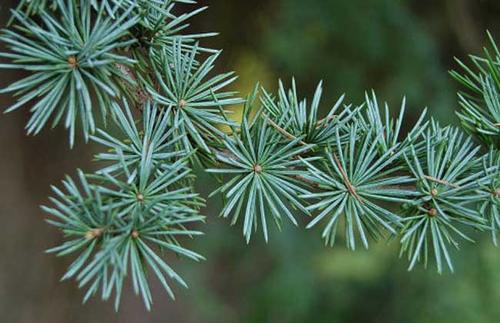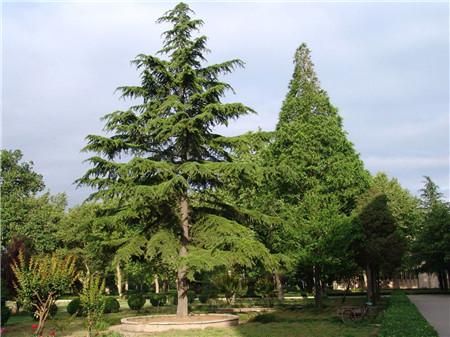How to grow and care for Deodar cedar
Written by Maggie
Sep 18 2021

Deodar cedar is an evergreen tree of the genus Deodar Cedar in the pine family. Today, we will talk about growing Deodar cedar care.
Deodar Cedar Pot selection
Purple clay or glazed pottery pots are preferred. When we grow and care for Deodar cedar, large bonsai can be used deep round basin, yike is used all sorts of chisel stone basin, but must be fixed with metal wire base.Medium-sized bonsai should use Begonia-shaped, manger shaped basin, seedling combined planting jungle type available alum stone or marble chisel stone shallow basin.
Deodar Cedar Soil Care
Potted Deodar cedar is often used with soil mixed with sand and aged field soil or leaf rot soil. When we grow and care for Deodar cedar, the seedlings of deodar cedar dug from the ground must be bedded with soil to help them survive. The dry roots were dispersed, the fibrous roots were spread out, covered with fine soil, the bowl was gently shaken, and the bamboo stick was used to firm the soil in the basin and the root system, so as to facilitate the growth of Deodar Cedar.
Deodar Cedar Trimming Care
When we grow and care for Deodar Cedar, attention should be paid to shaping and changing the head. Deodar cedar is a heavy branch in which the head is damaged or in a weak position and must be pulled and tied with a strong lateral technique to become the central advantage. This process is called a head replacement. The pruning basically removes to pass dense branch, short long branch, dead branch and sick insect branch to wait, according to individuals be fond of free mold tree form. In order to prevent the excessive growth of Deodar cedar, it is necessary to remove the terminal bud and eliminate the apical dominance, so as to make more lateral branches of Deodar cedar germinate.
Deodar Cedar Repotting Care
When we grow and care for Deodar cedar, every 2-3 years we need to turn the pot once, suitable for spring germination. When turning over the pot, replace half of the loose, fertile new soil and cut off the rotten roots. After turning over the basin, it needs to be moved to a shaded place for about 15 days before normal management.
Deodar Cedar Disease & Pest Control
Deodar cedar diseases mainly include Rhizoma blight, leaf blight, etc., which can be controlled by spraying dixone 500 ~ 800 times solution or 50% Deodar 800 times solution. The main pests are big bag moth, pine poison moth, red wax scale, red spider, skin worm, etc., which can be controlled by spraying 80% dichlorvos solution 1000 ~ 1500 times, and can also be killed by spraying 50% marathon emulsion solution 1000 times.

Deodar Cedar Care in Spring
Irrigating green water in early spring is conducive to the growth of new shoots and leaves; When we grow and care for Deodar cedar, in case of consecutive days with little rain and drought, newly planted trees should be irrigated to meet their growth and development conditions. Trees need more fertilizer in spring, but the activity of soil microorganisms is less during this period.
When the nutrients in the soil are available for absorption, some fertilizers should be applied to the trees. For perennial trees, organic fertilizers with high nitrogen fertilizer should be used mainly, and chemical fertilizers should be applied appropriately to ensure their normal growth.
When we grow and care for Deodar cedar for trees with weak growth and late germination of new leaves, water and fertilizer management can be increased, infusion of tree body and leaf surface fertilization can be adopted to revitalize and promote the germination of new leaves. With the germination of new leaves, diseases and insect pests begin to occur in spring, so monitoring and control efforts should be strengthened. In spring, the trunk of Deodar cedar was whitened to kill germs and eggs.In the new leaf before germination can spray a mixture of sulphur and stone, reducing the occurrence of spring pests and diseases.
Deodar Cedar Care in Summer
There is a lot of rain in summer, and Deodar cedar is afraid of waterlogging. When we grow and care for Deodar cedar, preparations for waterlogging prevention and drainage should be made before the rain, and the water should be removed in time after the rain. The drainage method is generally surface runoff and trench drainage. Timely removal of weeds, and appropriate topdressing of the tree, the late growth period to reduce the application of nitrogen fertilizer, increase the application of phosphorus, potassium fertilizer.
With the rise of temperature and humidity in summer, the occurrence of diseases and insect pests is also on the rise. When we grow and care for Deodar cedar, it is necessary to find and treat all kinds of diseases and insect pests as early as possible.Insect pests on Deodar Cedar include great senile moth, pine brown longicorn, Oriental mole cricket, etc., and diseases include root rot, shoot dieback, etc.
When we grow and care for the weak Deodar cedar, diseases and insect pests often occur more serious, in the treatment of diseases and insect pests at the same time, should be combined with rejuvenation measures to enhance the resistance of the tree itself. In case of consecutive days of high temperature, watering can be appropriate to avoid dehydration. After irrigation or heavy rain, when the surface is slightly dry, the tree holes are loosened timely to increase the permeability of the soil.
Deodar Cedar Care in Autumn
When we grow and care for Deodar cedar in autumn, the soil should be deeply turned and applied with basic fertilizer before and after the autumnal equinox. The base fertilizer is the late organic fertilizer such as decompose manure, compost, chicken dung, human excrement and urine, and green manure. The calcium superphosphate and potassium chloride can be used as base fertilizer and organic fertilizer.
In order to enrich the growth of tree tissues, fully lignify, enhance the resistance and meet the overwintering conditions, under normal circumstances, irrigation should not be carried out in autumn to avoid causing overgrowth. When we grow and care for Deodar cedar, cut off diseased and insect branches and treat them together with fallen leaves under the tree to eliminate pests and diseases in the dead branches and leaves.
Deodar Cedar Care in Winter
When we grow and care for Deodar cedar in winter, timely irrigation of antifreeze water, before the completion of freezing, to meet the overwintering conditions of the tree. After the heavy snow, the snow on the tree crown should be timely vibrationed down to prevent the branches from being broken. The winter wind is strong, in order to ensure that the tree body is not blown down by the wind, the tree body should be supported, and strengthen inspection, find the problem to correct in time. In winter, we will continue to control pests and diseases by pruning their branches and eliminating the eggs of overwintering insects.

Latest Updated
- Benefits of Bugleweed - 7 Science-backed Health Benefits
- Bugleweed Dangers & Side Effects - Is It Poisonous?
- How to Plant Evergreen Trees - What You Should Know
- When to Plant Evergreens - Grow Guide for Evergreen Trees
- 12 Wonderful Evergreen Shrubs for Your Garden
- 12 Popular Evergreen Plants with Pictures for Beginners
- When And How To Prune A Lilac Bush Like a Pro
- How to Grow & Care for Lilac Vine (Hardenbergia Violacea)
- Japanese Lilac Tree (Syringa Reticulata) Care & Propagation Guide
- Shumard Oak Pros and Cons - What to Know
Popular Articles
- Winter maintenance of Antirrhinum Majus
- How to Grow Terminalia Mantaly Tree
- How to Grow and Care for Crossostephium Chinense
- How to grow Antirrhinum Majus in spring
- Peristeria Elata (Dove Orchid) Profile: Info & Care Guide
- Underwatered Snake Plant (Sansevieria Trifasciata) - Signs And How To Fix
- How to Care for Brazilian Jasmine Plant (Mandevilla Sanderi)
- How to Grow & Care for Graptopetalum Purple Delight in Summer
- Rosa Chinensis (China Rose): Plant Growing & Care Tips
- How to Care for Baby Sun Rose (Aptenia Cordifolia)